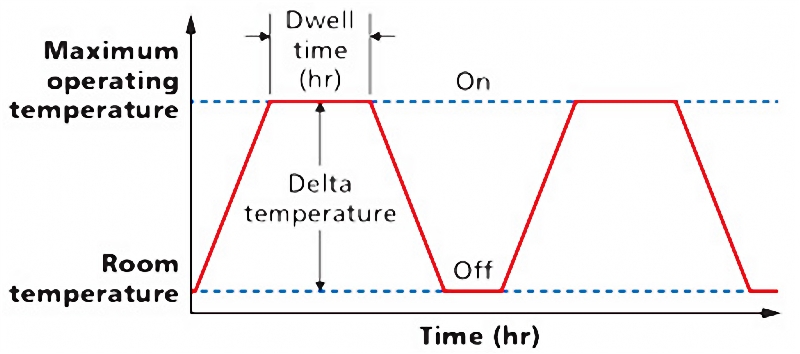NEWS
NEWS
Industry test standards requires evolution to achieve the accurate lifetime estimates of LED lights
08-06-2017
Most LED lights systems last much longer in many applications compared to traditional halogen light sources. However, all LED lightings are not created equal, and some users may find the LED products they selected failing much faster than the life values claimed by the manufacturers. This shortened lifetime can hurt user experience. LED lights failure can be catastrophic (no light emitted by the product) or parametric (there is light but much less compared to its designed lumen). An LED light has many components, as shown in the following photo, and the failure of any component can result in system failure. Present industry practice, however, tests the LED light and considers lumen depreciation time (i.e., parametric failure) to 70% as the life of an LED light. Because the industry standard requires testing only one component in the system and considers only one type of failure for rated LED light life, the manufacturer-reported product life may be much longer than what a consumer might get when using the LED lighting product in some applications.


The above graph shows a sample temperature-cycle profile experienced by the LED junction as a function of time, illustrating the parameters used in the LRC study for the experiments and analysis.
The study results showed that to obtain more accurate LED light life estimates, new testing practices must include whole-systemThe graph shows a sample temperature-cycle profile experienced by the LED junction as a function of time, illustrating the parameters used in the LRC study for the experiments and analysis. testing and on/off switching. When reporting system life, the shorter of the two failure modes (catastrophic or parametric) should be considered as the product lifetime because in applications, LED lights can experience both types of failure and depending on conditions, one type could dominate.
The study results provide encouragement that a test procedure can be developed to accurately predict LED light life in any application if the operating temperature and typical on/off pattern are known. By testing the whole LED light and including power cycling with enough dwell time, and by considering both catastrophic and parametric failures, an accurate prediction of LED light life can be made within a 3000-hour testing period.
Using the data collected in the LRC research, an LED lamp tested was estimated to last nearly nine years in a table lamp when used for three hours daily, and only two years in a non-IC (insulation contact) recessed downlight when used two hours daily. All of these tests data are much shorter than the rated life of the LED product, which is over 22 years when used for three hours daily. The incorrect expectation set by the theoretical product data specifications is caused by the present industry guidelines for testing and reporting lifetime data for LED lights. Therefore, there is an urgent need for the industry test standards to be revised to better guide product manufacturers and consumers.

An LED lighting system such as a LED lamp includes many components or subsystems that can lead to product failure.
Since 2009, the Lighting Research Center (LRC) at Rensselaer Polytechnic Institute has been investigating LED system life to develop a short-duration, predictive life-test procedure that can provide more realistic values for the product lifetime when used in an application if the operating temperature and the use pattern for switching the lighting system on and off are known. Early studies funded by the Alliance for Solid-State Illumination Systems and Technologies (ASSIST) found that time to failure was affected by delta temperature, or the temperature change during the on/off cycle, and dwell time, or the duration in which the system is operating at maximum steady-state temperature.

The above graph shows a sample temperature-cycle profile experienced by the LED junction as a function of time, illustrating the parameters used in the LRC study for the experiments and analysis.
The study results showed that to obtain more accurate LED light life estimates, new testing practices must include whole-systemThe graph shows a sample temperature-cycle profile experienced by the LED junction as a function of time, illustrating the parameters used in the LRC study for the experiments and analysis. testing and on/off switching. When reporting system life, the shorter of the two failure modes (catastrophic or parametric) should be considered as the product lifetime because in applications, LED lights can experience both types of failure and depending on conditions, one type could dominate.
The study results provide encouragement that a test procedure can be developed to accurately predict LED light life in any application if the operating temperature and typical on/off pattern are known. By testing the whole LED light and including power cycling with enough dwell time, and by considering both catastrophic and parametric failures, an accurate prediction of LED light life can be made within a 3000-hour testing period.
Using the data collected in the LRC research, an LED lamp tested was estimated to last nearly nine years in a table lamp when used for three hours daily, and only two years in a non-IC (insulation contact) recessed downlight when used two hours daily. All of these tests data are much shorter than the rated life of the LED product, which is over 22 years when used for three hours daily. The incorrect expectation set by the theoretical product data specifications is caused by the present industry guidelines for testing and reporting lifetime data for LED lights. Therefore, there is an urgent need for the industry test standards to be revised to better guide product manufacturers and consumers.


